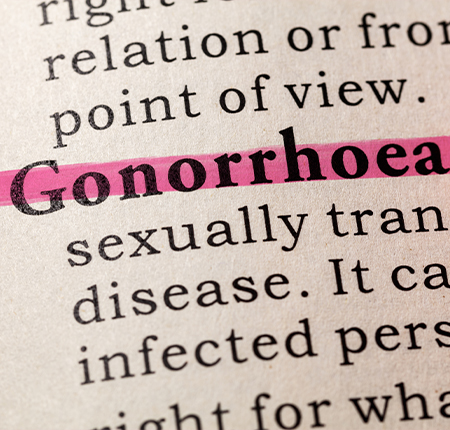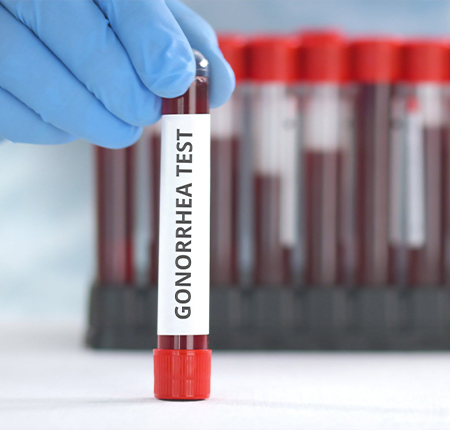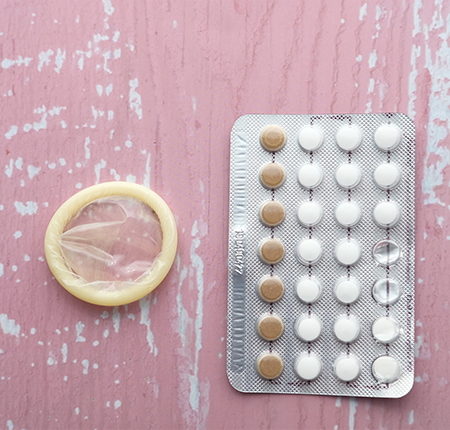
If you suddenly notice that the vaginal secretions become greenish-yellow in color or that there is a stinging or burning sensation when urinating, and these things happen after unprotected sexual contact, you may be infected with Gonorrhea. It is a common sexually transmitted disease that can affect both women and men.
But possibility is not certainty, and when the symptoms of gonorrhea are very similar to those of candidiasis and other infections, there is no way to be sure that it really is gonorrhea. Only the doctor can give you the correct diagnosis, and a specialist consultation is necessary as soon as possible.
And yet, what are these symptoms? What changes occur in your body that may indicate you have Gonorrhea infection and what else should you know about the causes, onset, diagnosis and treatment of the disease? Find out all the answers below to prevent gonorrhea and the complications it can cause.
What is gonorrhea
Gonorrhea is a very widespread sexually transmitted disease, which is based on infection with the bacterium Neisseria gonorrhoeae (N. gonorrhoeae or gonococcus). This bacteria attacks the mucous membranes of the reproductive tract, which means that in women, it affects:
- cervix
- uterus
- Fallopian tubes
Also, in both women and men, N. Gonorrhoeae can also affect the mucous membranes of the urethra, rectum, mouth or throat.

Gonorrhea - Causes
The cause of gonorrhea is infection with the bacterium N. Gonorrhoeae. But let's see how you can get infected with it and what are the ways through which it is transmitted.
The only way the bacteria can enter the human body is through unprotected sexual contact. And here we mean any kind of contact with the penis, vagina, mouth or anus of an infected partner, including when there is no ejaculation.
In short, gonococcus infection occurs through contact with vaginal or penile secretions that contain this bacterium. So, the main causes of gonorrhea are:
- Vaginal, oral or anal sex with an infected partner and without using a condom
- Sharing sex toys without first being disinfected or without using a new condom each time.
- It can also happen that gonorrhea is transmitted from the mother to the fetus during childbirth, but we will talk about this in more detail towards the end of the article.
It is important to remember that gonorrhea is a sexually transmitted infection, so it will not spread through other contact. It survives for a very short time outside the human body. so there is no need to worry if you hold an infected person or share other things. We don't get gonorrhea by using the same plates, cutlery, towels, or from public pools/toilets.
How common is gonorrhea
Gonorrhea is one of the most common sexually transmitted diseases, and most of the diseases occur in young people, between the ages of 15-24.
According to 2021 surveys in the US, Gonorrhea is the second most common bacterial sexually transmitted infection.
In Europe, 2021 reports confirm 46,728 cases of N. Gonorrhea infection in 27 countries.
These remain, however, only estimated numbers. The reality may be even harsher, as many infections are asymptomatic and thus go unreported or untreated.
How does gonorrhea infection start in women or men
Both women and men are mostly asymptomatic. That is, there are practically no symptoms that indicate gonorrhea infection. And when they are present, these symptoms appear in the first 2-14 days after contacting the bacteria and have such a low intensity that they can easily go unnoticed or be confused with other infections of the intimate area.
In women, the initial signs of the disease are:
- Pain when urinating (dysuria)
- Abundant vaginal discharge
- Intermenstrual vaginal bleeding
In men, the first signs can appear anytime between the first and 14th day after infection, and may include:
- Dysuria (is the first noticeable symptom)
- White, yellow or green discharge
The onset of gonorrhea is easy to overlook, especially because approx. 50% of women and 1 in 10 men have no specific symptoms.
People prone to gonorrhea
Anyone who is sexually active is vulnerable and can be infected with gonorrhea through unprotected sexual contact (that is, when a barrier method is not used).
So people who don't use condoms, or those who frequently change partners, are even more prone to N. gonorrhoeae infection.
Symptoms for gonorrhea
Gonorrhea infections can remain in the body for a long time, untreated, because many people, women and men, are asymptomatic. When symptoms do exist, they are usually manifested by:
- Pain when urinating
- Discharge/discharge that changes texture and color
- Discharge, itching, bleeding or pain in the anus in case of rectal infection
- Sore throat in case of pharynx infection
- Conjunctivitis, itching, irritation and eye pain if infected vaginal or seminal fluids come into contact with the eyes
These are the general symptoms, common to both women and men. Specifically, we tell you below what are the symptoms of gonorrhea in men and women.
Gonorrhea symptoms in men
Men may notice in the first 2 weeks after infection signs such as:
- Stinging or pain when urinating
- Unusual white, yellow or green discharge at the tip of the penis
- Swelling (inflammation) of the glans of the penis
- Tenderness or pain in the testicles
Gonorrhea symptoms in women
And in the case of women, the symptoms of gonorrhea are quite general and can easily be confused with those of another urinary or vaginal infection:
- Abnormal yellow or green vaginal discharge with a thin or watery consistency
- Intermenstrual bleeding
- Heavy menstrual flow
- Bleeding after sexual contact
- Burning sensation or pain when urinating
- Pain or tenderness in the lower abdomen area
It is important to understand that only the doctor, after testing, can make the correct diagnosis, because symptoms alone are not conclusive. All these signs are non-specific and also coincide with manifestations of infections such as chlamydia or candidiasis. We also talked about candidiasis in another blog article because it is a very common infection and it can happen to any woman, so we wanted you to have all the information available and feel a little more prepared.
How is gonorrhea diagnosed?
The diagnosis for gonorrhea is made by the specialist doctor only after testing (laboratory analyzes of samples collected quickly and painlessly of vaginal/urethral secretion). It is the only way to confirm if a person has gonorrhea or any other sexually transmitted disease.
For women, the vaginal discharge sample is collected from the cervix or vagina using a swab, either by the doctor or the patient. Sometimes the doctor may also collect a sample from the urethra.
In the case of men, both a penile discharge sample and a urine sample can be tested.
Testing can be done even a few days after sexual contact if you suspect you have been infected, but it is usually recommended to wait at least 7 days. Otherwise, you can be tested even if you don't have any symptoms, and you have several options:
- To the specialist (gynecologist for women, urologist for men, or dermatovenerologist for both women and men)
- At a private clinic
- You can buy a test from the pharmacy that you can do yourself
The earlier you get the diagnosis, the faster appropriate treatment can be followed to avoid further complications. Some clinics can provide an immediate diagnosis if the doctor examines the sample under a microscope on the spot. In the case of samples sent to the laboratory, you can wait up to 2 weeks to receive the results.

Treatment for gonorrhea
In the treatment of gonorrhea, antibiotics are used that are administered by injection or orally. Home treatment with "cures" or other natural alternatives is not recommended. Antibiotics are the only ones that quickly and effectively treat N. gonorrhoeae infection.
Both the infected person and the sexual partner(s) are treated. It is also recommended to avoid any sexual contact until the treatment is completed to avoid transmission of the disease.
Symptoms (if any) improve within the first few days. If the disease has reached the stage where it causes pain, it may even take up to 2 weeks for it to disappear.
After the first week or two after the end of the treatment, there is usually a new medical consultation and a new test, to confirm that the infection is gone.
Complications of gonorrhea
Untreated, gonorrhea manifests itself with increasingly severe symptoms and can lead to serious complications and permanent consequences for both women and men:
- Untreated gonorrhea can infect the blood, leading to disseminated gonococcal infection and other health problems such as arthritis, tenosynovitis, and dermatitis.
- Untreated gonorrhea can also increase the risk of HIV infection.
- In women, the infection can spread to the uterus and fallopian tubes, causing pelvic inflammatory disease (PID), with severe abdominal pain and fever. Left untreated, BIP can damage the fallopian tubes, increasing the risk of an ectopic pregnancy and infertility.
- In men, gonorrhea can cause complications such as epididymitis, painful inflammation of the scrotum, and rarely infertility.
How does gonorrhea affect a pregnant woman
Pregnant women who are infected with gonorrhea should be treated as soon as possible, as the bacteria can adversely affect the pregnancy and the fetus. Infection during pregnancy can lead to:
- Miscarriage
- Premature birth
- Transmission of the disease to the fetus during childbirth
- The birth of the baby with conjunctivitis
It is important that the mother is cured of gonorrhea before giving birth through the vaginal canal. Passing the infection on to the baby can cause permanent vision problems, joint problems, or serious blood infections if not treated immediately with antibiotics.
How you can prevent gonorrhea
You can prevent the transmission of gonorrhea during sexual intercourse and the complications following infection:
- Using condoms and other barrier methods for any vaginal, oral, or anal sex
- Having a monogamous relationship with the same partner who has been tested and is not infected
- Avoiding sexual contact with multiple partners or those who are at high risk of being infected
- Testing yourself for any suspected infection
Gonorrhea is transmitted through sexual contact, so the safest method of prevention is abstinence from any form of intimate contact. But that doesn't mean sexually active people can't protect themselves, so always use a barrier method.























